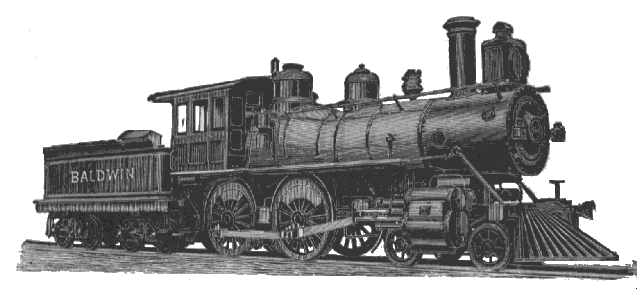 |
|


HISTORY OF LONGVIEW Longview's history is an interesting one, being intermingled with the history of Earpville. Earpville dates back to 1841 when James Earp and James Starkey purchased 1031 acres of land for $5.06 plus the court costs. On the east side of the land was Harrison County and on the west side of the land was what is today 6th street of Longview. Earpville, named for James Earp, was an already founded town on the 1031 acres. Longview came about by O.H. Methvin deeding 100 acres to the southern Pacific Railroad for $1 on April 7, 1870 and an adjacent 50 acres for $500 on October 28, 1870. The sale of the initial 100 acres is marked as the "birth of Longview". The following year, on January 27, 1871, the Longview Post Office was established. The city of Longview, on May 17, 1871, became the first incorpated town in the future Gregg County. As early as 1841, Earpville had been laid out as a town site. This was in the days of the Republic of Texas. There were a few crude homes, a store which also dubbed as the relay horse-coach station, and a church. One Rev. Job Taylor owned and operated the relay horse-coach station. The coaches would pull in from the now Louisiana from Camden (now Easton), through Earpville to Winona, Crockett and Santone. This coach stop was given up when the annexation of Texas to the US took place in 1845. O.H. Methvin Sr. began the creation of Longview when he deeded 100 acres in 1870 to the Southern Pacific Railroad with the agreement that the railroad would buy an additional 50 acres and run the railroad through his land and build a railroad station within the town site. Longview is obviously one of the towns that was given a simple topographical name. Some of the history in connection with its name is quite interesting for there are different opinions as to the origin of the name Longview. One point of agreement is that Longview was so named because you could stand on a certain hill in town and looking about, you had such a long view. The differences of opinions begin with the "what hill" and "who said" questions. Longview was incorporated on May 17, 1871 under the mayoral form of government when the secretary of state granted a charter. This was truely the end of Earpville. One year later the IGN Railroad came through, giving the community two railroads. At this time Longview was still a part of Upshur County. In 1873 Gregg County was formed and Longview was chosen to be the county seat by the voters. What is now W. Tyler street was the first business district of Longview. They were all crudely built wooden buildings, serving their purpose without any fanfare. In 1877 a fire swept through the town, destroying nearly all of the wooden housed businesses. The town residents quickly began to rebuild and constructed less crude buildings for the businesses to operate in. Longview seemed destined for tragedy when a short time later an epidemic of Small Pox hit the town. Quickly pest houses were established for the sick to be carried to, an ill attempt to keep the disease from spreading. Sadly, many of the towns residents lost their lives during this tragic time. One of Longview's first newspapers was owned and operated by James Hogg, Texas first native governor. It was located on what is now Bank Street in Longview. Being the transportation center for the area kept Longview bustling with people, which in turn kept the newspapers busy with local news. With the two railroads and a busy farm community, the need for new business in Longview grew. In 1904 Longview leaders brought in the first municipal waterworks. The artesian well and stand pipe system served the city well until it was replaced 25 years later. In 1919 Longview experienced a race riot. Martial law was declared and it was considered unsafe to be on the streets at night. All guns in the county were ordered brought to the courthouse and deposited. In 1922 the city council appointed a committee to draw up a city charter. This committee was composed of: E.M. Bramlette (head of the committee), R.M. Kelly, T.B. Stinchcomb, O.A. Reese, J.R. Sparkman, Edwin Lacy, J.J. Boyd, F.K. Lathrop, Leroy Trice, F.T. Rembert, C.W. Foster, E.A. Braddy, C.L. Taylor, W.C. Hurst, J.W. Dalston, H.M. Lawrence, George Davis and J.F. Burke. The city charter was passed and adopted on Feb. 20, 1923. In Jan. of 1929, the T&P railroad terminal was moved to Mineola. This was a severe blow to the economy of Longview. It had always been a railroad town, and this move took about 700 families and a payroll of more than one million dollars out of Longview's economy. Shortly the depression came, and Longview struggled for its existence. In 1930 a drought hit and the main economy was hit with yet another blow. Business men started locking their doors at night, wondering if they could last another day. Finally a break came with the find of oil in 1930. The recovery was rapid with one oil well after another being discovered. Knowledgeable geologists were not yet accustomed to finding oil in the types of underground formations which were known to exist in the Gregg County area. And no one even dreamed of a single, virtually solid pool of oil covering more than 200 square miles. Its like had never been seen before. In 1930 Longview had a population of 5,000. In 1935 the population had grown to 25,000 with the incoming oil related industries and workers. With the end of WWII there was another period of rapid growth
and development. Longview quickly launched an intensive industrial
development program. Companies known nation wide moved to Longview,
building large installations and put the city back on firm economical
footing. |
Copyright
© 2007 - present by TXGenWeb
(Please read our copyright page
for a better understanding of our copyright needs.)
COPYRIGHT
NOTICE
Materials on this site are provided for the free use of persons who are researching
their family history. Data may be freely used by non-commercial and/or completely
free entities, as long as this message remains on all copied material.
Any commercial use, without the prior consent of the host/author of the materials
provided on this site, is prohibited. The electronic pages on this site may
not be reproduced in any format for profit.
Notice to Webmasters: You may not copy and paste the information on any of the pages of this site onto another web page without first obtaining explicit permission to do so and without including the copyright notice.